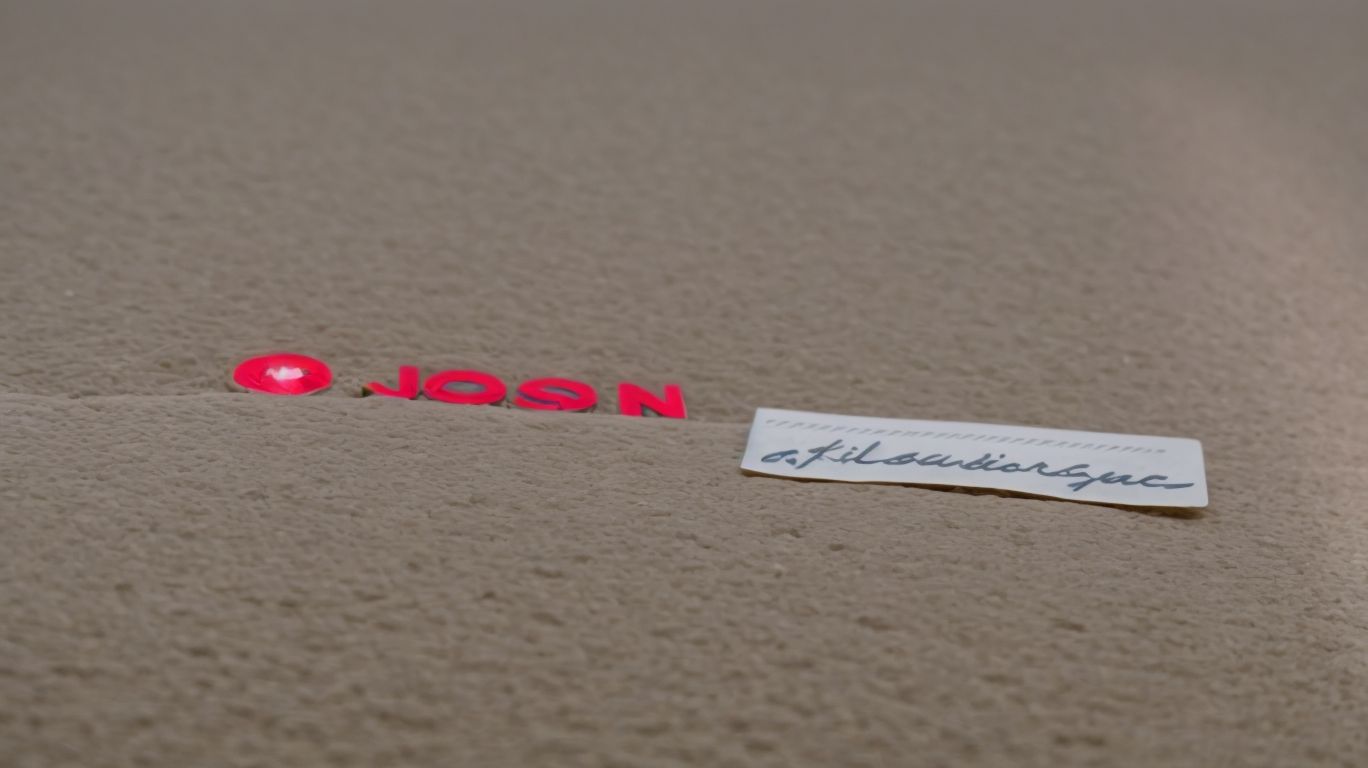Have you ever wondered how relative height can influence the way we perceive others? From the impact of visual cues to the role of personal experiences, there are various factors at play.
In this article, we will explore how relative height is perceived psychologically and its effects on our perception of power, attractiveness, competence, and intelligence. We will delve into how relative height can affect social interactions, relationships, career success, and social hierarchy.
Can relative height be changed or manipulated? Let’s find out together.
Contents
- 1 What Is Relative Height?
- 2 How Is Relative Height Perceived Psychologically?
- 3 What Are the Effects of Relative Height on Perception?
- 4 How Does Relative Height Affect Social Interactions?
- 5 Can Relative Height Be Changed or Manipulated?
- 6 Frequently Asked Questions
- 6.1 What is relative height in psychological perception?
- 6.2 How does understanding relative height in psychological perception affect our everyday lives?
- 6.3 What factors influence our perception of relative height?
- 6.4 Can our perception of relative height be altered or manipulated?
- 6.5 How does culture play a role in our understanding of relative height?
- 6.6 Is understanding relative height in psychological perception important in fields other than psychology?
What Is Relative Height?
Relative height refers to the visual perception of objects or entities based on their vertical positioning in relation to each other or a reference point.
When objects are placed higher in a scene, they are typically perceived as being farther away, while objects positioned lower are often interpreted as closer. This phenomenon plays a crucial role in our understanding of depth and distance. The concept of relative height is closely tied to perspective, as it influences how we perceive spatial relationships within our surroundings. In art and design, manipulating relative height can be used to create illusions of depth and distance, enhancing the visual impact of the composition.
How Is Relative Height Perceived Psychologically?
The psychological perception of relative height involves the interpretation of vertical alignment, retinal image size, and the positioning of objects to determine their spatial relationships and distances.
Our perception of relative height is heavily influenced by visual cues that our brain processes to make sense of the world around us. When looking at objects in different positions, our brain evaluates the angles and sizes to estimate their distance from us. Visual illusions like the Ponzo illusion can trick our perception by creating false depth cues, making objects appear larger or smaller than they actually are.
For instance, when presented with two boxes of the same size placed at varying distances, the farther box may appear larger due to our brain compensating for the perceived distance.
Influence of Visual Cues
Visual cues such as converging lines, like railroad tracks, can create an illusion of depth and affect our perception of relative height in visual scenes.
One significant aspect contributing to the manipulation of height perception is linear perspective. In linear perspective, objects appear smaller as they move further away, conveying a sense of distance and depth. This phenomenon plays a crucial role in how we judge the relative heights of objects in a scene.
Illusions, like the Ponzo illusion, exploit these cues to trick our minds into misjudging the height of objects. By strategically using converging lines and other visual cues, the Ponzo illusion creates an exaggerated sense of height difference between objects placed in a particular context, despite them being of similar size.
Impact of Social Conditioning
Social conditioning and cultural norms can influence how individuals perceive relative height, as depicted in various works by authors exploring the nuances of height perception.
Often, in literature and art, authors like Eugene Boudin and Chenyang Lin delve into the complexities of height perception, showcasing how societal constructs can impact one’s understanding of stature. For instance, Boudin’s paintings reflect a juxtaposition of characters of varying heights, symbolic of power dynamics and societal hierarchies.
Similarly, Lin’s sculptures play with proportions, challenging the traditional notion of ideal height by presenting exaggerated or diminished figures, prompting viewers to question their preconceived notions about what constitutes normal height.
Role of Personal Experiences
Personal experiences and individual encounters with visual illusions or displays can shape one’s understanding of relative height and its implications in everyday perception.
One’s perception of height can be greatly influenced by encounters with visual illusions. For example, exposure to illusions like the Box-Circle illusion, where identical-sized circles placed inside squares make one circle appear larger than the other due to the surrounding context, can distort how individuals judge heights in real-life situations.
What Are the Effects of Relative Height on Perception?
Relative height plays a crucial role in shaping our perception of objects, distances, and spatial relationships, influencing how we interpret the horizon in landscapes or paintings.
When an object is placed higher in the visual field, it often appears closer to the viewer, creating depth and enhancing the sense of scale within the composition. This phenomenon is particularly evident in Western perspective paintings, where artists skillfully manipulate relative height to convey spatial depth. By strategically positioning objects at varying heights, artists can guide the viewer’s gaze and create a sense of three-dimensionality on a two-dimensional canvas. Relative height is a powerful tool in an artist’s arsenal, allowing them to play with perspectives and alter how viewers perceive distance and proximity in their artworks.
Perception of Power and Dominance
The perception of power and dominance can be influenced by relative height comparisons, where taller objects or individuals are often associated with authority and control.
Height plays a significant role in shaping how we view others and ourselves in various social settings. Psychologically, individuals tend to assign attributes like strength, leadership, and competence to those who are taller, creating a hierarchy based on physical stature. These perceptions extend to objects as well, with taller structures symbolizing stability and influence. Such height-centric judgments can impact interpersonal dynamics, influencing who is listened to, followed, or even deemed credible in different contexts.
Perception of Attractiveness
The perception of attractiveness can be influenced by relative height considerations, where individuals may associate taller stature with enhanced physical appeal.
Studies have shown that in many cultures, a taller height is often linked to greater social status and perceived attractiveness. This perception is deeply ingrained and can affect various aspects of life including dating preferences, job opportunities, and overall social interactions. Height bias can also impact self-esteem and contribute to the proliferation of certain beauty standards. On the other hand, it is important to recognize that beauty comes in all shapes and sizes, and the emphasis on height should not overshadow other important traits that contribute to overall attractiveness.
Perception of Competence and Intelligence
Perceptions of competence and intelligence can be influenced by relative height comparisons, with taller individuals often being viewed as more capable or intelligent.
Research suggests that this bias towards taller individuals may stem from societal norms and stereotypes that associate height with authority and leadership.
- Study: One study conducted at the University of Colorado found that taller people are often seen as having greater social status and are more likely to be promoted in professional settings.
There is evidence to suggest that this bias can start as early as childhood, with taller children sometimes being perceived as more competent or advanced than their shorter peers.
How Does Relative Height Affect Social Interactions?
Relative height can significantly impact social interactions by influencing how individuals are perceived in social settings, affecting dynamics such as relationships, hierarchies, and status.
People often subconsciously make judgments about an individual’s authority or dominance based on their height alone. This phenomenon can be observed in various contexts, from workplace dynamics to personal relationships. For instance, taller individuals are often viewed as more competent or assertive, while shorter individuals may face challenges in commanding respect. Understanding the intricacies of height perceptions can provide insights into the complex nature of social dynamics and how individuals navigate social structures based on physical attributes.
Influence on Relationships and Dating
Height perceptions can impact relationships and dating dynamics, where individuals may associate height with desirable traits or relationship compatibility.
When height preferences come into play, they can affect partner selection and romantic chemistry significantly.
Studies have shown that taller individuals are often perceived as more attractive, confident, and dominant, while shorter individuals may face certain stereotypes or biases. These stereotypes can sometimes lead to unfair judgments and hinder potential connections.
Individuals themselves may have specific height requirements or expectations when seeking a partner, which can further complicate the dating landscape. As a result, height can be a defining factor in how individuals perceive and engage in romantic relationships.
Impact on Career and Success
Height perceptions can influence career opportunities and success, with taller individuals often being perceived as more competent or suitable for leadership roles.
The correlation between height and professional success has been a topic of interest in various industries. Studies have shown that taller individuals tend to earn higher salaries and are more likely to be promoted to managerial positions. This bias, known as heightism, can impact workplace dynamics and create challenges for shorter employees seeking recognition. Furthermore, height stereotypes can affect how individuals are perceived in job interviews and networking events, potentially hindering their career growth opportunities.
Role in Social Hierarchy and Status
Height can play a significant role in determining social hierarchy and status, where taller individuals may be assigned higher social standing or perceived as more influential.
Studies have shown that height influences the way individuals are viewed and treated in various social contexts. In many cultures, height is associated with leadership qualities and competence, leading to taller individuals often being appointed to positions of authority. This phenomenon, known as heightism, highlights the bias that exists based on physical stature.
Furthermore, the impact of height extends beyond individual interactions and can shape broader societal structures. Tall people may have more opportunities for advancement, access to better resources, and even higher incomes based on their perceived social status.
Can Relative Height Be Changed or Manipulated?
While relative height is primarily a perceptual phenomenon, certain visual illusions or manipulations can alter height perceptions momentarily, showcasing the malleability of visual experiences.
For example, the Ponzo illusion capitalizes on depth perception cues to make objects of identical size appear larger based on their placement in a converging or diverging background. This manipulation exploits our brain’s tendency to interpret objects within a context, creating an illusion of distance and height difference. Such illusions are subject to specific conditions and may not work universally for all individuals, highlighting the intricacies of our visual processing system.
Role of Height-Enhancing Products
Height-enhancing products claim to alter one’s relative height perception by providing temporary adjustments in posture or footwear, offering individuals a chance to experiment with altered height perceptions.
These products often come in the form of height-increasing insoles, ergonomic shoes, or posture correctors that promise to enhance stature instantly. While the effects of these products may vary from subtle to more pronounced changes in height, they are typically not a permanent solution to increasing one’s actual height.
Consumers have reported mixed experiences with height-enhancing products, with some praising the confidence boost and improved posture they provide, while others express disappointment in the short-lived effect and discomfort that may accompany prolonged use.
Impact of Height-Related Surgeries
Height-related surgeries offer permanent alterations in an individual’s physical height, introducing significant changes to one’s relative height perception and potentially affecting social interactions and self-perception.
These surgical procedures are a result of advancements in medical technology and are carried out with the intention of correcting height-related issues or fulfilling an individual’s desire to increase or decrease their height.
The risks associated with such surgeries include potential complications during the procedure, the need for extensive recovery time, and the possibility of unsatisfactory results or negative impacts on overall health.
On the other hand, the benefits can be substantial, providing individuals with increased confidence, improved posture, and a sense of satisfaction with their appearance.
Importance of Acceptance and Self-Confidence
Acceptance of one’s natural height and fostering self-confidence can mitigate concerns related to relative height perceptions, promoting positive self-image and reducing the impact of height-related biases.
Embracing individual stature allows for a shift in mindset towards self-enablement, breaking free from societal standards and embracing personal uniqueness.
Stepping into confidence, whether tall or petite, involves cultivating a strong sense of self-worth and resilience to navigate any height-related challenges.
By focusing on inner qualities, individuals can build a foundation of self-assurance, realizing that one’s value goes beyond physical appearance.
Acceptance of self encourages a positive self-perception, fostering mental well-being and shaping responses to external judgments.
Frequently Asked Questions
What is relative height in psychological perception?
Relative height in psychological perception refers to the way our mind interprets the height of objects in relation to one another. It helps us understand the depth and distance of objects in our surroundings.
How does understanding relative height in psychological perception affect our everyday lives?
Understanding relative height in psychological perception helps us navigate our environment and make accurate judgments about the size and distance of objects. It also plays a role in how we perceive things in terms of importance and power.
What factors influence our perception of relative height?
Our perception of relative height can be influenced by a variety of factors, such as lighting, color, size, and distance. These factors can alter our perception of an object’s height and how it relates to other objects in our surroundings.
Can our perception of relative height be altered or manipulated?
Yes, our perception of relative height can be altered or manipulated through various techniques, such as using optical illusions or changing the perspective from which we view an object. Our brain can also be tricked into perceiving objects as taller or shorter than they actually are.
How does culture play a role in our understanding of relative height?
Cultural norms and beliefs can influence our perception of relative height. For example, in some cultures, taller objects are seen as more powerful or important, while in others, shorter objects may hold more significance.
Is understanding relative height in psychological perception important in fields other than psychology?
Yes, understanding relative height is important in fields such as architecture, design, and advertising. It helps professionals create visually appealing and effective spaces and images by utilizing the principles of relative height in their work.



